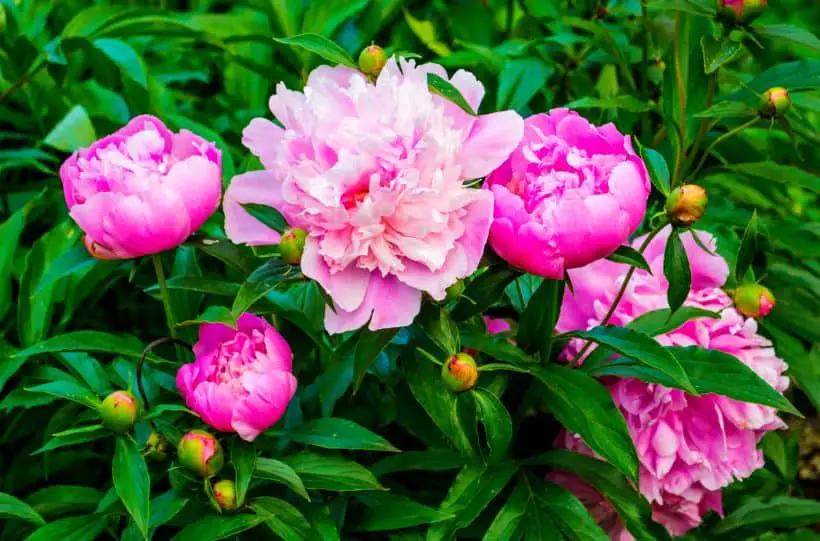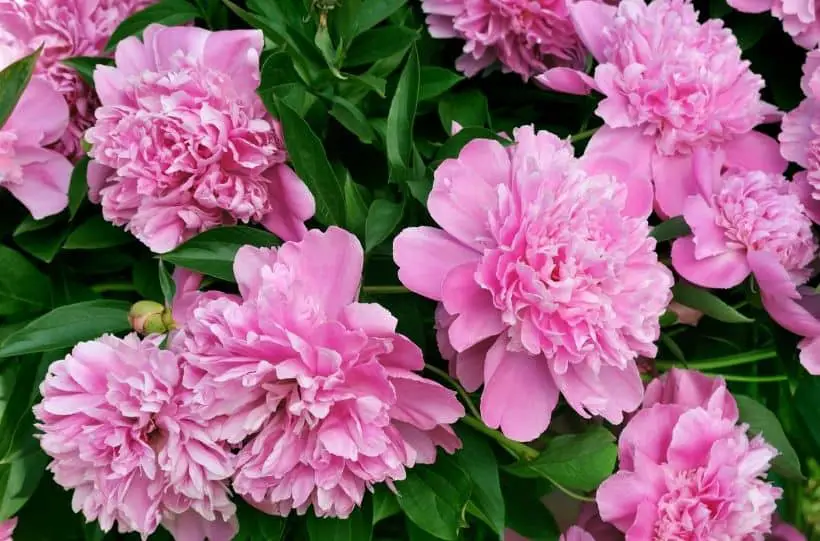How to Grow and Care for Peonies
Peonies are among the most visible and delightful flowers. They are perennials that bloom from spring through summer. The large, lush flowers can make any garden or foliage lively.
Once established, the peonies grow for a long time (decades) and can withstand numerous weather and climatic challenges. In this article, you will learn everything you need to know about growing peonies and how to take care of them.

Where do Peonies Grow?
Peonies can grow in almost any location within the country. They are very fragrant and colorful flowers. Depending on the variety, you will find them in hues of pink, white, red, purple, pink, lilac, mahogany, and yellow.
Generally, peonies bloom in spring and summer. You may have some flowers blooming late after the summer season has passed. The best time to plant them would be in April or May. You can also plant the late-blooming varieties in September.
Planting Peonies
Peonies love well-drained soil. They are not very particular about the type but do well in rich, well-drained, slightly acidic soils. They also love being exposed to sunshine for several hours daily. When planting peonies, follow the following steps;
- Dig a hole in the soil up to an 18-inch depth.
- Add compost. At this stage, you can also add fertilizer. Mix well with a bit of soil.
- Plant the peony tuber inside the hole. Ensure that the ‘eyes’ face upwards and are not buried more than two inches below the soil’s surface. The stalk will shoot from these ‘eyes’. If you plant peonies deeper than this, they might not produce many flowers.
- Water the plant deeply but do not overwater. Repeat this process several times every week until the roots become fully established.
- You can add mulch but ensure that the mulch does not touch the base of the plants.
- This process also works if you decide to grow peonies inside containers.
- Peonies can grow up to 3 feet tall. Some varieties grow as shrubs and can shoot up to 7 feet. Ensure that you support the tall plants so that the flowers do not come into contact with the ground. This will reduce the possibility of diseases attacking your plant. Create a support system during the early days of growing peonies. Creating an effective support system will be impossible once the plant and flowers have matured.
- If possible provide shade during the hottest parts of the day. The plants require exposure to sunshine but too much heat will kill them quickly.
You should note that peonies do not mature and bloom quickly. It usually takes about three years to have your flowers grow into shrubs and start producing beautiful blooms. Once that happens, there is a chance that the plant might outlive you!
The plant will require little care after that – A bit of pruning, de-budding, and applying compost now and then. The first year is spent preparing the plant to develop a strong root system.
Peonies can also be started in containers. These can be planted at any time of the year. Ensure the ground is well-drained and the soil is not too cold when transplanting the seedlings from containers.
Pests and Diseases Affecting Peonies and How to Control Them
Not many pests and diseases affect peonies. You may find ants crawling on your buds occasionally but the ants are not eating or destroying these buds. They are merely enjoying the sweet sticky sap the peony buds produce.
Some of the diseases you can expect to find affecting peonies include fungal diseases such as botrytis bright, bacterial bright, leaf blotch, or phytophthora blight.
Botrytis is controlled by removing the old and affected stalks from the garden. Other diseases can be easily controlled by planting your peonies in a raised bed and regulating the amount of water you give the plants. Overwatering will lead to root rot and other fungal diseases.
Remove the leaves of the foliage at the lower levels to keep the leaves from coming into contact with the ground.
Types of Peonies Flowers
There are numerous types and varieties of peony flowers. The varieties fall into three categories:
- Tree Peonies
- Intersectional/Itoh Peonies
- Herbaceous Peonies.

Itoh peonies are a hybrid of the tree peony types and the herbaceous peony flower varieties.
The most common peony cultivars are;
- Sarah Bernhardt peony
- Karl Rosenfield peony
- Bowl of beauty peony
- Festiva maxima peony
- Red charm peony
There are six types of peonies namely the Japanese peony, Bomb, Anemone, single, semi-double, and double.
Harvesting Peonies
Peonies make wonderful cut flowers and the colorful blooms can make any room lively. Here are the steps to follow if you want to harvest and keep enjoying peonies even in late summer;
- Peony buds enlarge as they get closer to harvesting time. You should harvest when the petals begin to emerge and the buds are about to open up. This stage is called the marshmallow stage and the buds open within a day or two.
- Cut the stems using a sharp sterilized knife to prevent spreading diseases to the rest of the plants in the field. At this stage, the peonies will remain fresh for longer than when the flowers are open.
- Remove the leaves at the lower sections of the stem and place the stem in water at room temperature. Leaves tend to rot faster when submerged inside water and they also tend to suck energy from the main bloom.
- Cut the flowers early in the morning or late in the evening. If you cut the stems during the day when the sun is high, you will stress the flowers and force the buds to open up early.
How to Prepare Peonies for Winter
Providing winter protection for peonies is advisable if you want your plants to survive the frost and give you another thriving season the next year. If you live in zones where the winter cold is not that harsh, you may not need to winterize your peonies.
Start by providing a layer of organic mulch in the fall. This will keep the soil around the base of the plant warm and moist. You can also provide some sort of shade to protect them against harsh cold winds.
Do you love flowering perennials too? If so, be sure to check out some of our other guides next:
